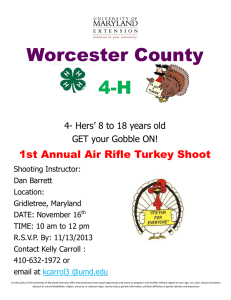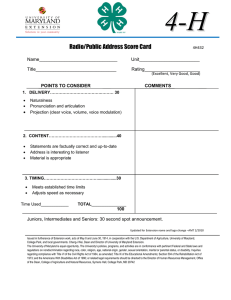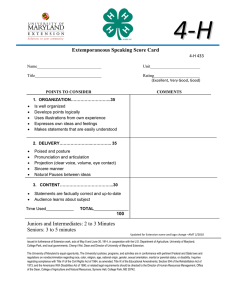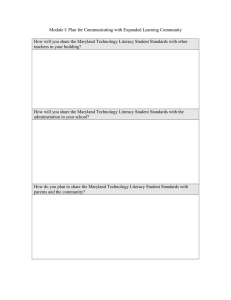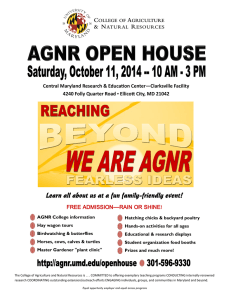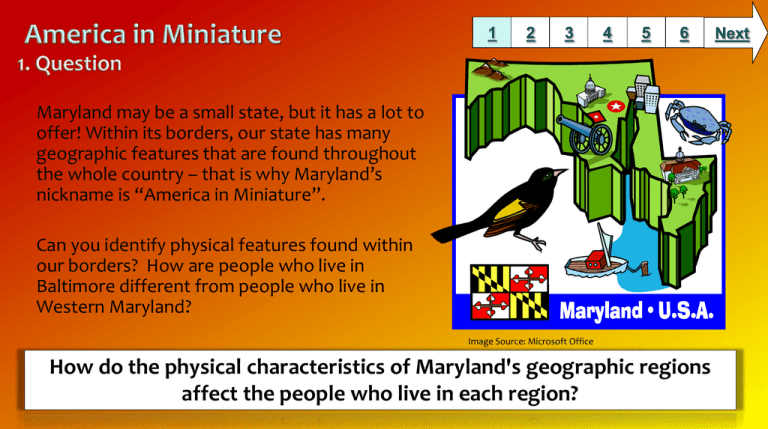
1
2
3
4
5
6
Maryland may be a small state, but it has a lot to
offer! Within its borders, our state has many
geographic features that are found throughout
the whole country – that is why Maryland’s
nickname is “America in Miniature”.
Can you identify physical features found within
our borders? How are people who live in
Baltimore different from people who live in
Western Maryland?
Image Source: Microsoft Office
How do the physical characteristics of Maryland's geographic regions
affect the people who live in each region?
Next
1
2
3
4
5
6
Next
The resources below will help you identify and describe the different regions of Maryland.
Map Resources
Maryland Fact
Resources
More Resources
Interactive Maryland
County Map
Maryland Fact Page
Rural, Suburban, and Urban
Communities video
Interactive County Map of
Maryland
Maryland Facts
World Book: Maryland
Maryland Attractions
Landform Region Map
Maryland Facts and Stats
1
Use the graphic organizer on the
right to assist you in identifying
what each region has to offer the
citizens of Maryland.
Use the resources on the previous
page to help locate the information.
Image Source: BCPS
2
3
4
5
6
Next
1
2
3
4
You need to choose one region in Maryland to create
an ad campaign to promote that area. Use this
organizer to narrow down the information you have
previously collected.
Choose the type of ad campaign you would like to
create:
A brochure
An ad poster
An audio public service announcement using Audacity
A video public service announcement using your
device or a video camera
Use this rubric to help you create your ad campaign.
Image Source: Microsoft Office
5
6
Next
1
2
3
4
5
6
Next
Image Source: netTrekker by subscription
Visit Antietam
Image Source: World Book Student
Visit Historic St. Mary’s
City
Image Source: Microsoft Office
State Symbols
Chesapeake Bay
Image Source: Microsoft Office
1
Grade Level and Content Area
BCPS Curriculum / Maryland State Curriculum
Grade 4 Social Studies/Library Curriculum
Social Studies Standards
Standard 3.0 Geography
See attached document for all standards.
Common Core State Standards
Reading: 1. Read closely to determine what the text says explicitly and to make logical inferences from it;
cite specific textual evidence when writing or speaking to support conclusions drawn from the text.
Writing: 7. Conduct short as well as more sustained research projects based on focused questions,
demonstrating understanding of the subject under investigation.
Standards for the 21st Century Learner
1.1.6 Read, view, and listen for information presented in any format (e.g. textual, visual, media, digital) in
order to make inferences and gather meaning.
2.1.3 Use strategies to draw conclusions from information and apply knowledge to curricular areas, realworld situations, and further investigations.
ISTE NETS - National Educational Technology Standards for Students
3. Research and Information Fluency: Students apply digital tools to gather, evaluate, and use information.
b. Locate, organize, analyze, evaluate, synthesize, and ethically use information from a variety of
sources and media.
4. Critical Thinking, Problem Solving, and Decision Making: Students use critical thinking skills to plan and
conduct research, manage projects, solve problems, and make informed decisions using appropriate
digital tools and resources. c. Collect and analyze data to identify solutions and/or make informed
decisions.
2
3
4
5
6
Time Frame: Three 50 minute Lessons
Differentiation strategies for this lesson:
Direct students to use learning tools included in our BCPS-
licensed databases, such as: audio read-aloud, labeled reading
levels/Lexiles, and embedded dictionaries.
Students can work individually, partners, or small groups to
complete the slam dunk.
Silver stars on grade level resources and gold stars are
challenging text.
The brochure and posters can be printed and created by hand
if necessary.
Learning Styles addressed in this lesson:
Auditory, Visual, Kinesthetic, Reflective, Sequential, Field
Independent
Notes to the teacher:
This lesson is for the Library Media Curriculum.
Teachers WILL need to show the YouTube video to students on
page 1, as students do not have access to YouTube.
Last updated: July 2014
Created by Marlena Aumen, Library Media Intern
BCPS Slam Dunk Research Model, Copyright 2013, Baltimore County Public Schools, MD, all rights reserved. The models may be used for educational, non-profit school use only.
All other uses, transmissions, and duplications are prohibited unless permission is granted expressly. This lesson is based on Jamie McKenzie’s Slam Dunk Lesson module.

